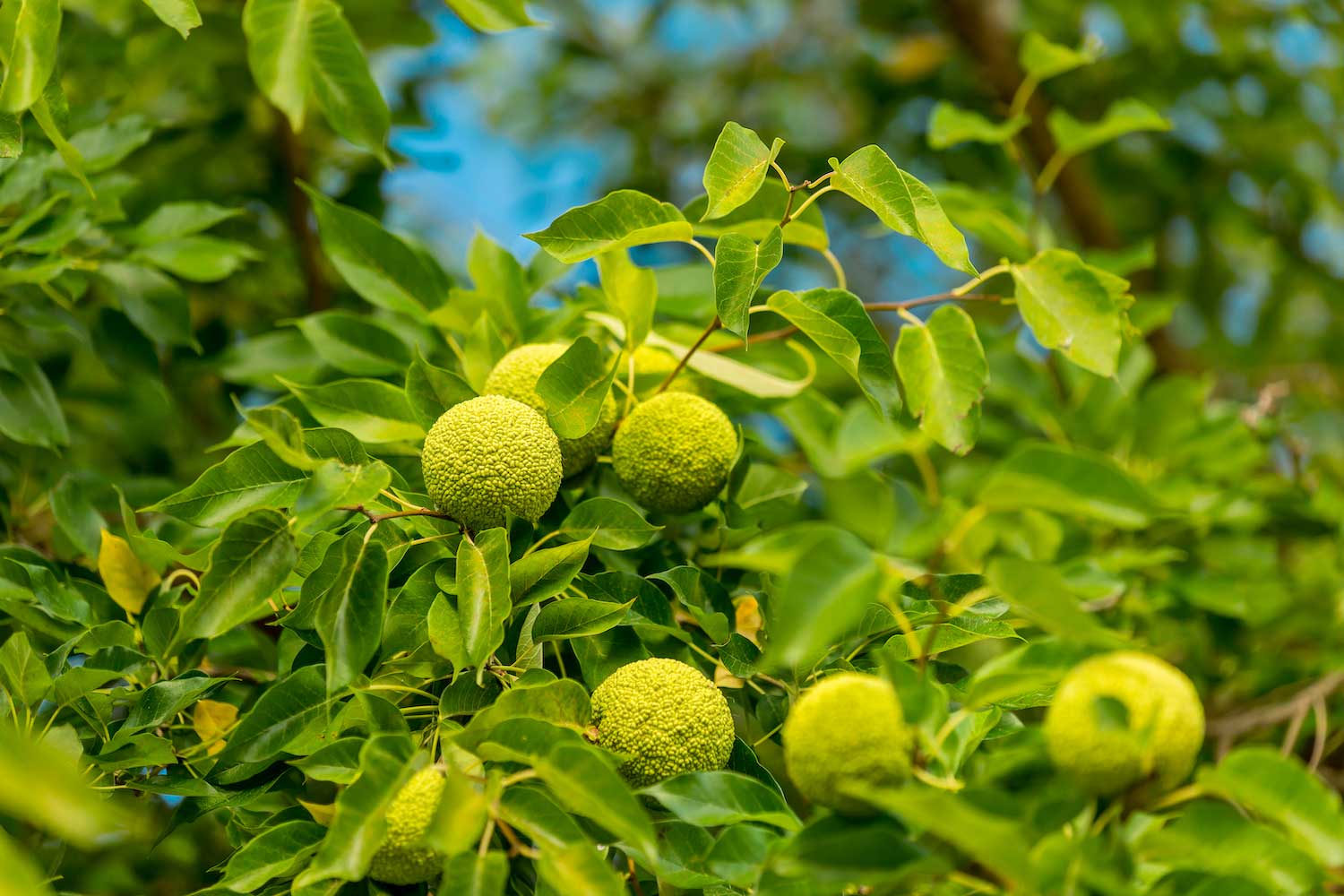A different kind of orange: Osage orange trees have long, storied history

When you think of orange trees growing in the United States, you probably think of citrus groves in Florida or maybe orchards in Arizona, California and Texas. Illinois probably doesn't come to mind at all, although we do have orange trees growing right here in our state. Illinois' orange trees aren't the citrus trees producing popular Navel and Valencia oranges, however. Instead, Illinois is home to Osage orange trees.
Osage orange trees are quite a bit different than the trees that grow one of our most familiar fruits. In fact, they aren't related to oranges at all, according to National Geographic. Instead, they are most closely related to mulberry trees. And the oranges these trees produce aren't orange either. The large, round fruits, which are sometimes called horse apples or monkey brains because of their texture, are a bright greenish-yellow color. They are about the same size as a softball, making them the largest fruit produced by a tree native to the United States.
So although no one is going to be plucking fruit from an Osage orange tree to squeeze a glass of juice for breakfast, these trees and their fruit do have quite a history — and a long one at that. Unlike the citrus trees that grow in the United States, which are native to Asia, Osage orange trees are native to North America. They date back to a time before the last Ice Age, when they grew over almost all of North America, National Geographic reports. After the glaciers melted, they did not expand as far north as their range once covered. Instead, they mostly grew in what today includes Arkansas, Oklahoma and Texas.
They are called Osage oranges because the area where they grew was home to the native Osage Nation, according to the University of Illinois Extension. Because the wood from the trees is very strong, Native peoples used it to make bows for hunting as well as other tools. This is why Native groups often called the trees bowwood trees. Similarly, French explorers called the tree bois d'arc, meaning "wood for a bow."
Osage orange trees are enduring, able to tolerate a range of environmental conditions and live for centuries. Meriwether Lewis of the famed Lewis and Clark expeditionary duo took cuttings from an Osage orange tree at the start of his now well-known journey in 1804 and sent them to President Thomas Jefferson in Philadelphia, National Geographic reports. The cuttings were propagated, and those trees still exist today.
Later, as early European settlers began to travel west across the continent, another use for the hardy trees was discovered. Because the trees produce thorns, they were able to be planted as a fence of sorts, given rise to another name for them, hedge apple trees. Their use as hedges took off in the middle of the 19th century, with about 60,000 miles of hedges planted with the trees in the Midwest and South, National Geographic reports. This practice fell by the wayside with the advent of barbed wire later in the 19th century, but the trees gained favor again during the Dust Bowl, being planted to serve as windbreaks across the Great Plains to protect farms and farmsteads from dust storms.
The wood from the trees has many desirable qualities. It's flexible, and it resists decay better than other North American trees, according to National Geographic. Plus it burns hotter than any other wood in North America and doesn't produce a lot of smoke, making it a good choice for firewood.
As for the fruit, it isn't as desirable as the wood. Some small mammals may nibble on the oranges, but they are not commonly eaten, the University of Illinois Extension reports. In some ways, it's a matter of practicality. The fruit is very large — the size of a softball, remember — so it's not easy to consume or transport for local wildlife. It's size, though, may also be a link to its past.
The trees are believed to date back to the Pleistocene era, a time when large mammals like giant sloths, mastodons and woolly mammoths roamed the Earth. For these behemoth creatures, the fruits were not cumbersome because of their size. They would have been eaten by these animals, and the trees would have spread as the animals dispersed the seeds, the Extension reports.
Although Osage orange trees aren't commonplace in Illinois today, they can and do grow throughout the state and may be available for purchase from some nurseries. If you want to plant one in your yard, look for a spot that gets full sun, the Morton Arboretum advises. They are a small- to medium-sized tree, reaching heights of between 20 feet and 40 feet.
